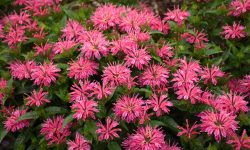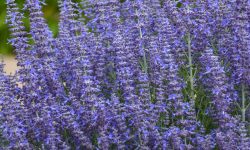Orchids are one of the most diverse groups of plants on the planet, with over 25,000 species in every corner of the globe. They have adapted to survive in some of the harshest and most extreme environments on Earth, from high mountain peaks to steamy tropical rainforests. Orchids have even been found growing out of cracks in concrete!
How do these delicate flowers manage to thrive in such a wide range of conditions?
One key to orchids’ success is their incredible ability to adapt to their environment. For example, many orchids grow epiphytically, meaning they live on other plants or trees instead of in soil.
This allows them to take advantage of nutrients and moisture that other plants can’t access. Orchids also have special roots that help them absorb water and minerals from the air around them. In fact, some orchids don’t need any soil at all – they get everything they need from the air!
Orchids are one of the most unique and interesting flowers in the world. They are also one of the most adaptable. Orchids can grow in a wide range of environments, from hot and humid tropical rainforests to cold mountain peaks.
One reason for their versatility is that they have developed a number of different ways to reproduce. One common method is called vegetative reproduction, which involves taking advantage of small pieces of the plant that break off and start new plants. This allows orchids to quickly colonize new areas.
Another way orchids adapt to their environment is by forming symbiotic relationships with other organisms. For example, many orchids have a symbiotic relationship with a type of fungus called mycorrhizae. The fungus helps the orchid absorb water and nutrients from the soil, while the orchid provides the fungus with sugars that it produces through photosynthesis.
Orchids are also very good at seed dispersal. Their seeds are extremely tiny, and they often hitch rides on insects or animals to spread to new areas.
10 Adaptations for Orchids
Orchids are one of the most popular houseplants, and for good reason. They’re relatively easy to care for and come in a wide variety of colors and shapes. But did you know that there are actually over 25,000 different species of orchids?
That’s a lot of diversity!
With so many different types of orchids, it’s not surprising that they have adapted to grow in a wide range of habitats. From hot, humid jungles to cold, mountainous regions, you can find an orchid that will thrive in just about any environment.
Here are 10 interesting adaptations that some species of orchids have developed:
1. Orchids have aerial roots that help them absorb water and nutrients from the air around them. This is especially helpful in areas where the soil is poor or lacking in nutrients.
2. Many orchids are epiphytic, which means they grow on other plants instead of in the ground. This adaptation allows them to get the moisture and nutrients they need without having to compete with other plants for resources.
3. The leaves of some orchid species are covered in tiny pores called stomata.
These pores open and close to regulate the exchange of gases between the plant and its surroundings – similar to how our lungs work!
4. Some types of orchids produce nectar that is high in sugar content. This helps attract certain insects like bees and butterflies, which then act as pollinators for the plant.
Orchids Adaptations in the Rainforest
Orchids are one of the most diverse groups of plants in the world, with over 25,000 species that can be found on every continent except Antarctica. Many of these species are found in tropical rainforests, where they have adapted to the warm, wet conditions.
One of the ways that orchids have adapted to the rainforest environment is by developing water-resistant leaves.
This helps them to withstand the constant moisture in the air and also prevents them from being harmed by fungal diseases. The leaves of some orchid species are also covered in tiny pores, which help to absorb moisture from the air and keep the plant hydrated.
Another adaptation that orchids have made is to grow without soil.
Instead, they anchor themselves onto trees or rocks using their roots. This allows them to get all the nutrients and water they need from the air and mist around them. It also means that they don’t have to compete with other plants for space or resources.
The flowers of many orchid species are highly specialized for pollination by particular insects or birds. The colourful petals and nectar-producing structures attract these animals, who then transfer pollen from one flower to another as they move about in search of food. This relationship benefits both parties involved – the orchids get pollinated and spread their genes, while the animals get a tasty reward for their efforts!
How Do Ferns Adapt to the Tropical Rainforest
Ferns are a type of plant that have adapted to live in the tropical rainforest. The tropical rainforest is a hot, moist environment with little sunlight. Ferns have adapted to this environment by developing large leaves that can absorb lots of light and prevent the plant from drying out.
They also have deep roots that help them anchor themselves in the soil and get access to water during periods of drought.
Orchid Behavioral Adaptations
Orchids are one of the most diverse groups of plants on the planet, with over 25,000 species in existence. They can be found in nearly every corner of the globe, from hot, tropical climates to cold, mountainous regions. Orchids have a wide range of adaptations that allow them to thrive in such a wide variety of habitats.
One of the most notable adaptations of orchids is their ability to grow without soil. Most plants rely on soil for anchorage, nutrients and water. Orchids, however, have developed special structures called rhizomes that allow them to attach themselves to trees or rocks.
Their roots are also adapted for maximum absorption of water and nutrients from the air around them.
Another interesting adaptation possessed by some orchid species is their ability to mimic other flowers. This gives them an advantage in attracting pollinators like bees and birds who may mistake them for another flower altogether.
The flowers of these orchids are often brightly colored and fragrant as well, furthering their appeal to potential pollinators.
Yet another adaptation seen in many orchid species is their production of chemicals that mimic those found in insects like ants and bees. These chemicals help the plants attract specific insect pollinators while deterring others (like herbivorous animals) from eating them.
Some scientists believe that this chemical mimicry may even extend to pheromones, allowing certain orchids to control the behavior of their insect pollinators!
Structural Adaptations of Orchids
Orchids are one of the most varied and fascinating groups of plants in the world. With over 25,000 species, they can be found on every continent except Antarctica. Orchids have a wide range of structural adaptations that allow them to thrive in a variety of habitats.
One of the most notable adaptations of orchids is their aerial roots. These roots are exposed to the air and help the plant absorb water and nutrients from the surrounding atmosphere. Aerial roots also help stabilize the plant and keep it anchored to its support.
Orchids also have specialised leaves called bracts which surround their flower buds. Bracts can be colourful and often mimic the flowers themselves, helping to attract pollinators. The bracts also protect the delicate flower buds from damage before they bloom.
The flowers of orchids are highly adapted for pollination by specific groups of animals such as insects, birds or bats. They often have brightly coloured petals and patterns that guide pollinators to their nectar-containing centres. Some orchid flowers even produce scents that attract certain pollinators.
:max_bytes(150000):strip_icc()/orchid-identification-1315976_final-481fe66a85724d94b1f2a181b86bb70d.jpg)
Credit: www.thespruce.com
What Features Help an Orchid Survive?
Orchids are one of the most popular houseplants, and for good reason! They’re unique, beautiful, and relatively easy to care for. But even though they’re tough plants, they still have specific needs that must be met in order for them to thrive.
In this blog post, we’ll discuss what features help an orchid survive and how you can make sure your orchid is getting everything it needs to stay healthy and happy.
One of the most important things to remember about orchids is that they are epiphytes, not terrestrial plants. This means that in their natural habitat, they grow on other plants or trees instead of in the ground.
As such, they require a different type of potting mix than most other houseplants. A good potting mix for an orchid should be light and airy with plenty of drainage. It should also contain some organic matter like bark chips or sphagnum moss to help keep the roots moist but not waterlogged.
In terms of watering, again because of their epiphytic nature, orchids need less water than most other houseplants. Allow the potting mix to dry out completely between watering episodes; overwatering is one of the quickest ways to kill an orchid. When you do water your plant, make sure to use room-temperature water instead of cold water from the tap; sudden temperature changes can damage delicate orchid roots.
Finally, another key element in keeping your Orchid alive is providing adequate humidity. These tropical plants prefer humid conditions; if your home is particularly dry during winter months (a common problem!), you may want to invest in a humidifier to keep your Orchid happy. You can also create a makeshift “humidity tray” by filling a shallow dish with gravel and setting your potted Orchid on top (just make sure the bottom leaves don’t touch the water!).
What Kind of Environment Do Orchids Need?
Orchids are a beautiful and popular plant that many people enjoy having in their homes. Though they may be seen as delicate, orchids are actually quite resilient and can thrive in a variety of environments. With proper care, your orchid can bloom for years to come!
When it comes to caring for an orchid, there are a few key things to keep in mind. First, orchids prefer bright, indirect sunlight. Too much direct sun can scorch the leaves, so it’s best to place your orchid near a window where it will receive indirect light throughout the day.
Second, orchids like to be kept moist but not wet. Water your orchid once a week, allowing the water to thoroughly soak through the potting mix before dumping out any excess. During the winter months, you may need to water your orchid less often as the cooler temperatures will cause the soil to dry out more slowly.
Finally, make sure your Orchid is getting good air circulation. Orchids do not like to be kept in stuffy rooms with poor air circulation. If possible, open a window or set up a fan near your Orchid to help circulate the air and prevent stagnant conditions.
With these simple tips in mind, you can create an ideal environment for your Orchid that will promote healthy growth and beautiful blooms for years to come!
What is the Special Feature of Orchids?
Orchids are a type of flower that come in many different colors, shapes, and sizes. They are known for their beauty and uniqueness. One of the things that makes orchids so special is that they have three petals instead of the usual four or five.
The third petal is called the lip or labellum, and it is often a different color than the other petals. This feature attracts pollinators to the flower so that the plant can reproduce.
Orchids grow in all parts of the world, but they are most commonly found in tropical climates.
There are over 25,000 different species of orchids, making them one of the largest families of plants in the world! Many people enjoy growing orchids as houseplants because they are relatively easy to care for and can bloom multiple times throughout the year.
Which Habitat Would Allow Orchids to Survive?
Orchids are a type of flower that can be found in a variety of habitats across the world. In order to survive, orchids need specific conditions that must be met in their habitat. These flowers require high humidity, bright light, and well-drained soil.
If any of these conditions are not met, the orchid will likely die.
One habitat where orchids can often be found is rainforests. This is because rainforests typically have high humidity levels and bright sunlight.
Additionally, the soil in rainforests is usually well-drained due to the high amount of rainfall that occurs in these regions. Another common habitat for orchids is tropical areas with similar climatic conditions to rainforests.
If you are looking to grow orchids, it is important to create a habitat that meets all of their needs.
This can be done by setting up a humidifier and placed near a window that gets plenty of sunlight. The potting mix for your Orchid should also be well-draining so that the roots do not become waterlogged. By providing your Orchid with the proper care and environment, you can ensure that it will thrive and bloom for many years to come!
Why are Orchids Important to the Environment?
Orchids are important to the environment for a variety of reasons. They help to regulate the ecosystem by providing food and shelter for a variety of animals. They also help to control pests and diseases.
In addition, they play a role in the pollination of other plants.
How Do Orchids Like to Live?
Orchids like to live in humid environments with temperatures ranging from 60-90 degrees F. They should be watered regularly, but allowed to dry out completely between waterings. Orchids also need bright, indirect light and good air circulation.
What Adaptations Do Orchids Have to Survive in the Tropical Rainforest?
Orchids in the tropical rainforest have several extraordinary adaptations that aid in their survival. These elegant flowers possess aerial roots, allowing them to absorb nutrients and moisture from the humid air. Their vibrant colors and unique shapes attract specific pollinators, ensuring successful reproduction. Orchids also possess specialized tissues that store water, allowing them to endure the rainforest’s fluctuating moisture levels. Finally, their ability to grow on trees and other surfaces, instead of relying solely on the ground, grants them access to sunlight and minimizes competition for resources.
Orchid Facts: Adaptations in Roots, Leaves, and Blossoms
Can I Use the Same Technique to Bud Orchids as I Would for Asiatic Lilies?
Can I use the same technique to bud Orchids as I would for Asiatic Lilies? The process of bud asiatic lilies differs from that of Orchids. While Orchids require specific care, including temperature and humidity control, Asiatic lilies can be propagated through division or from bulb scales. It is essential to research and follow the appropriate technique for each type of flower to ensure successful bud development.
Conclusion
Orchids are one of the oldest and most diverse groups of plants in the world. They can be found on every continent except Antarctica, and they grow in a wide range of habitats, from hot deserts to cold mountain tops. Orchids have adapted to their environment in a number of ways.
One way that orchids have adapted to their environment is by developing specialized roots that allow them to anchor themselves to trees or other objects. These roots are often covered with spongy tissue that absorbs water and nutrients from the air. Orchids also have developed leaves that are specially adapted to maximize light absorption and minimize water loss.
The flowers of some orchid species are highly specialized, with large surfaces that reflect ultraviolet light or produce scent that attracts pollinators such as bees, birds, and bats.
Orchids are able to adapt to changing conditions by altering the size, shape, and color of their flowers. For example, some orchids bloom only at night when it is cooler and there is more moisture in the air.
Other orchids change the color of their flowers depending on the time of day or season, making them more likely to be pollinated by different types of animals.






